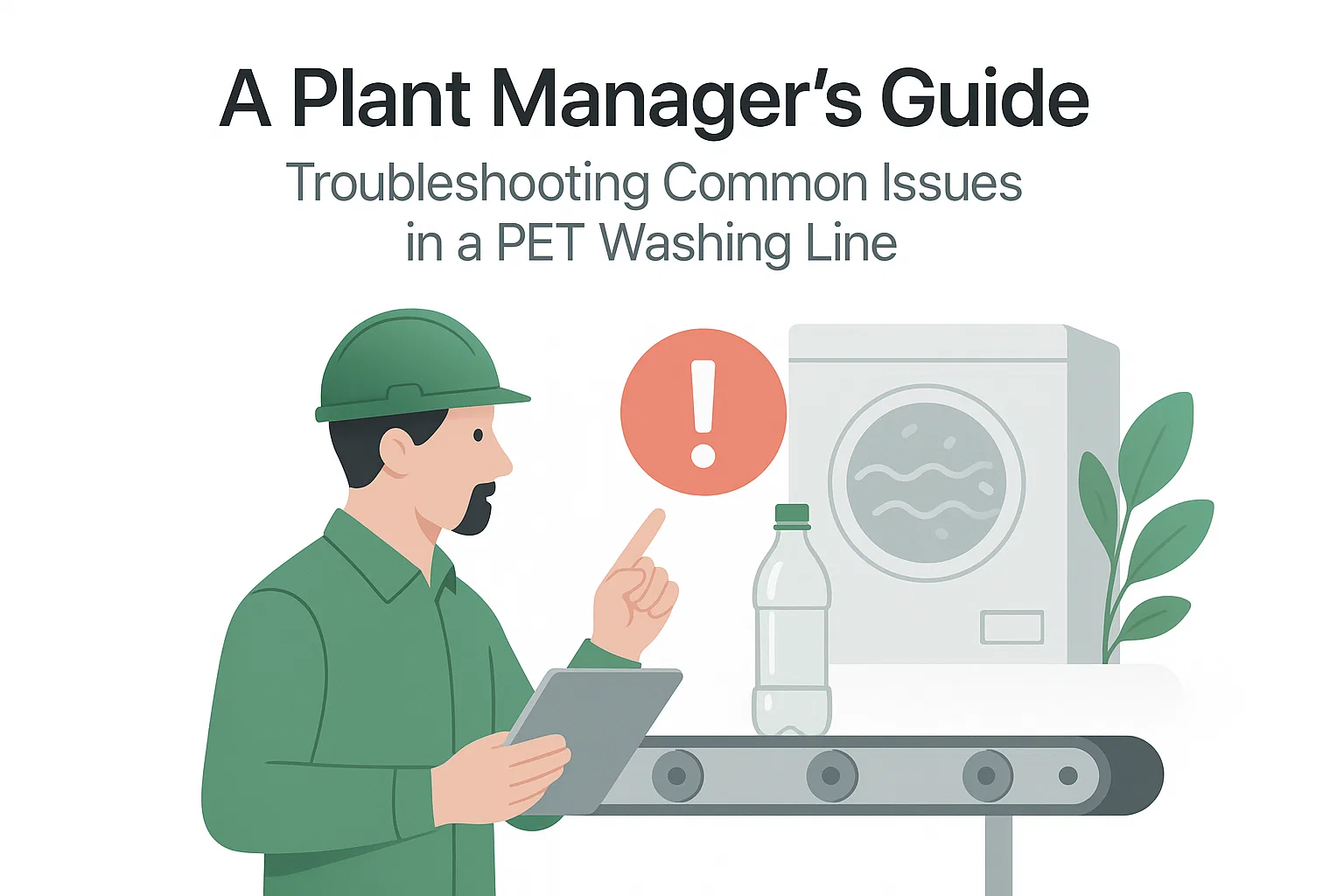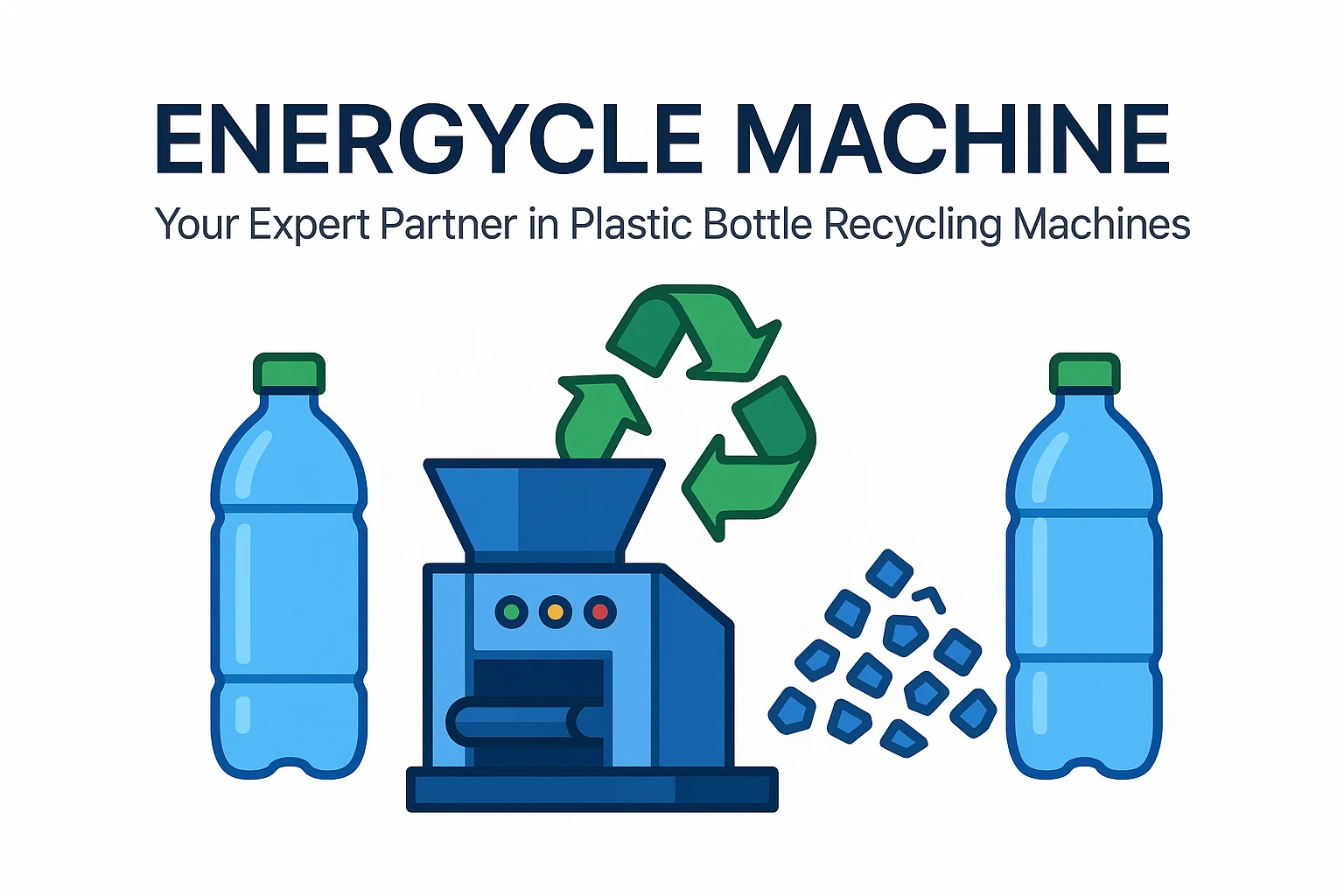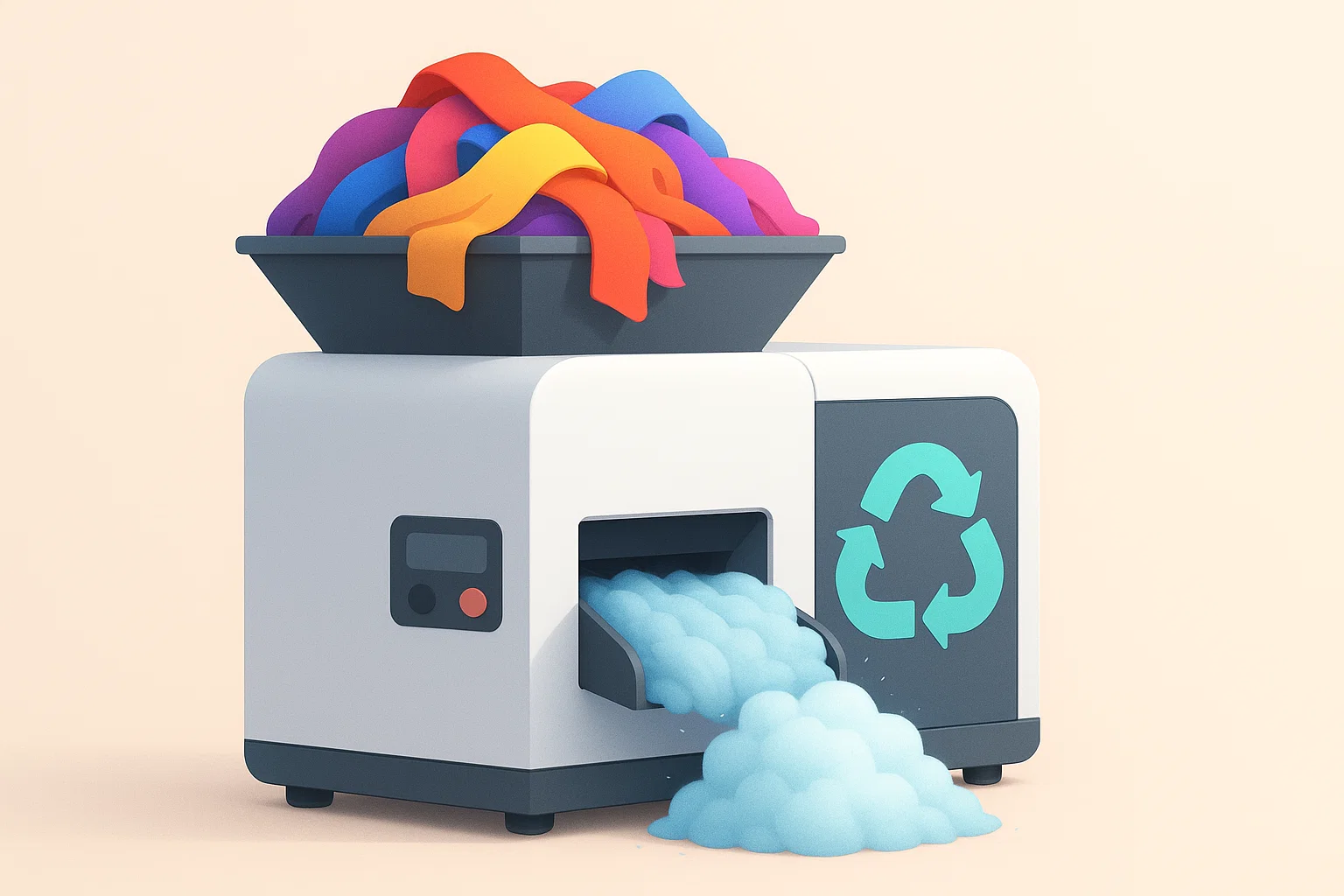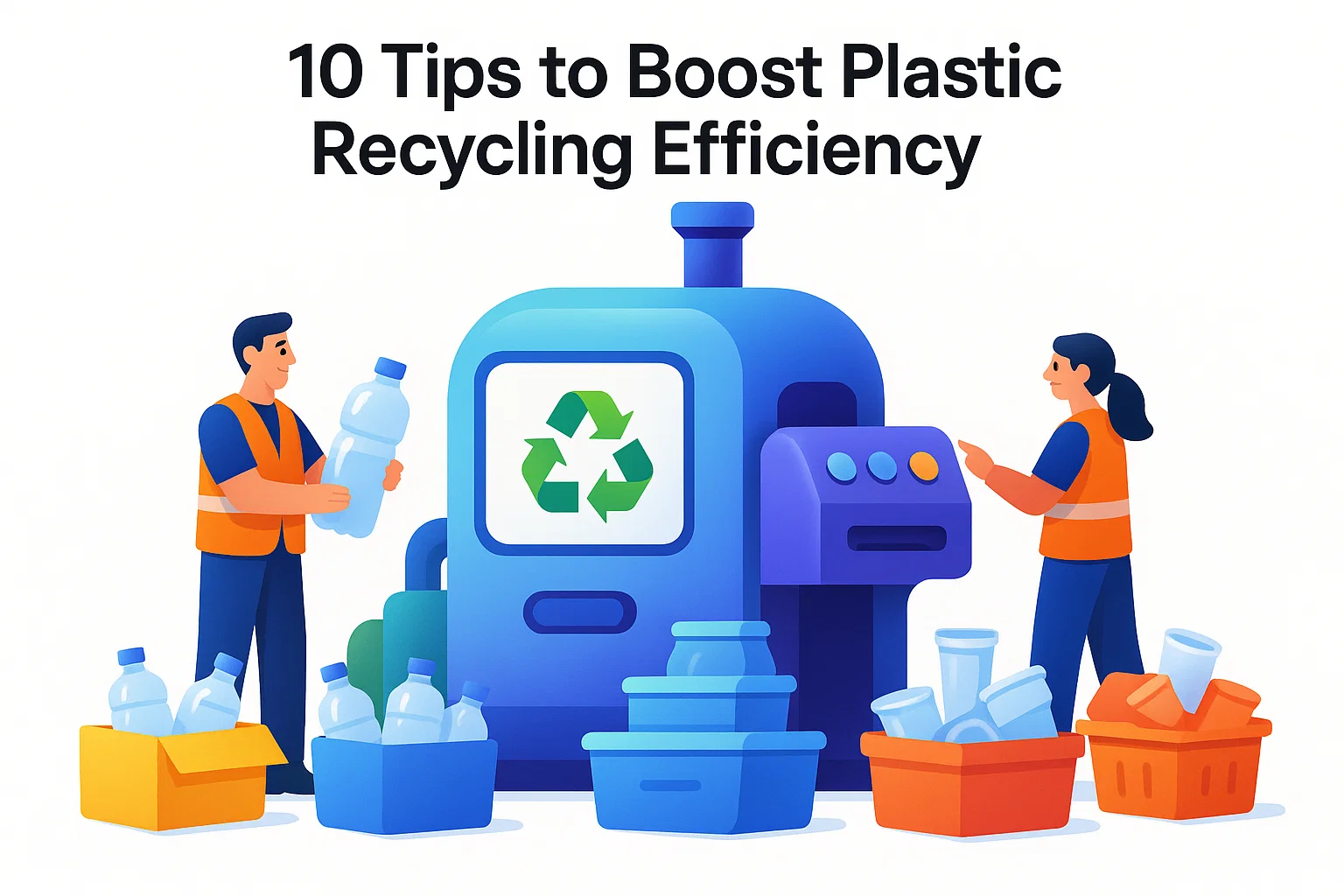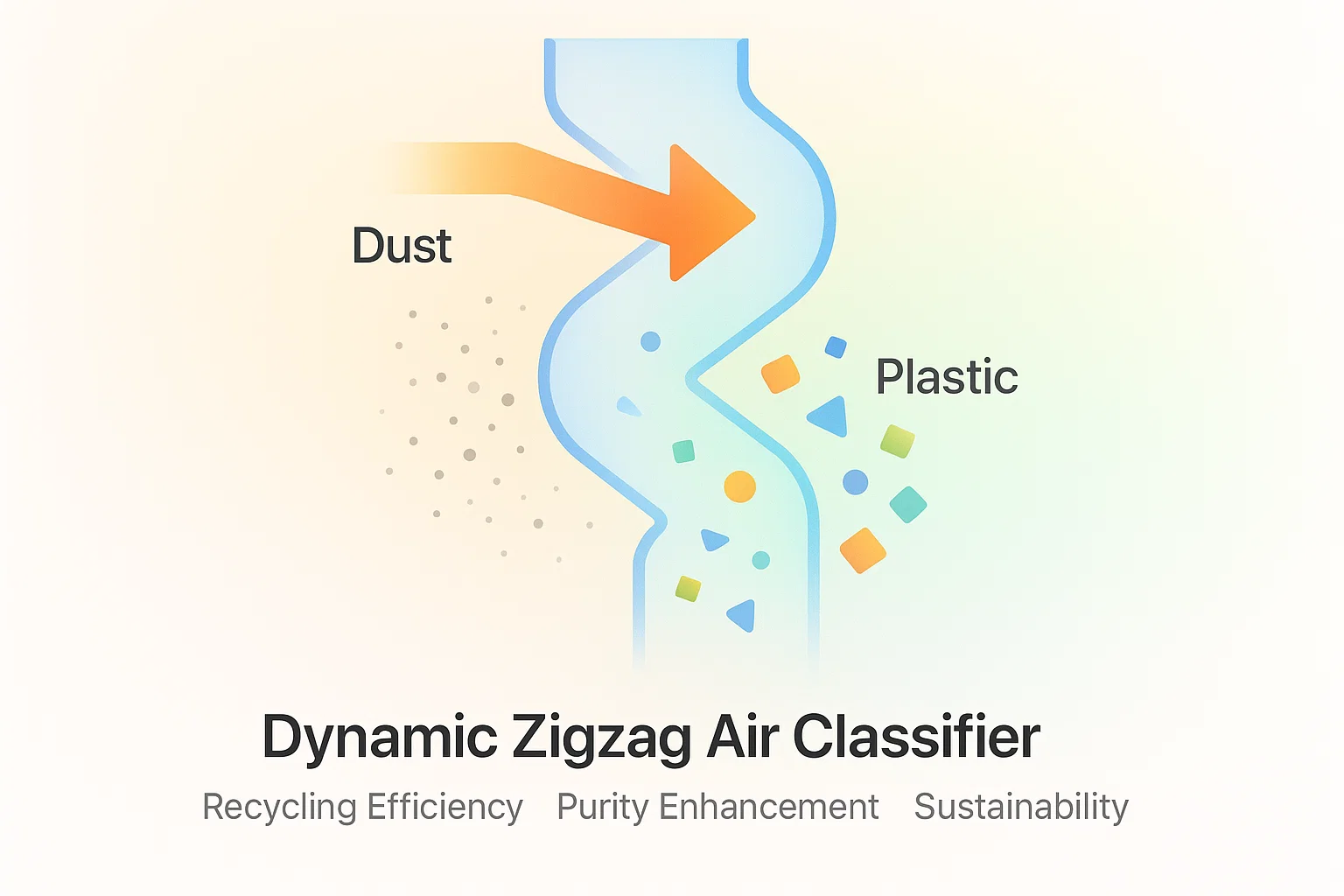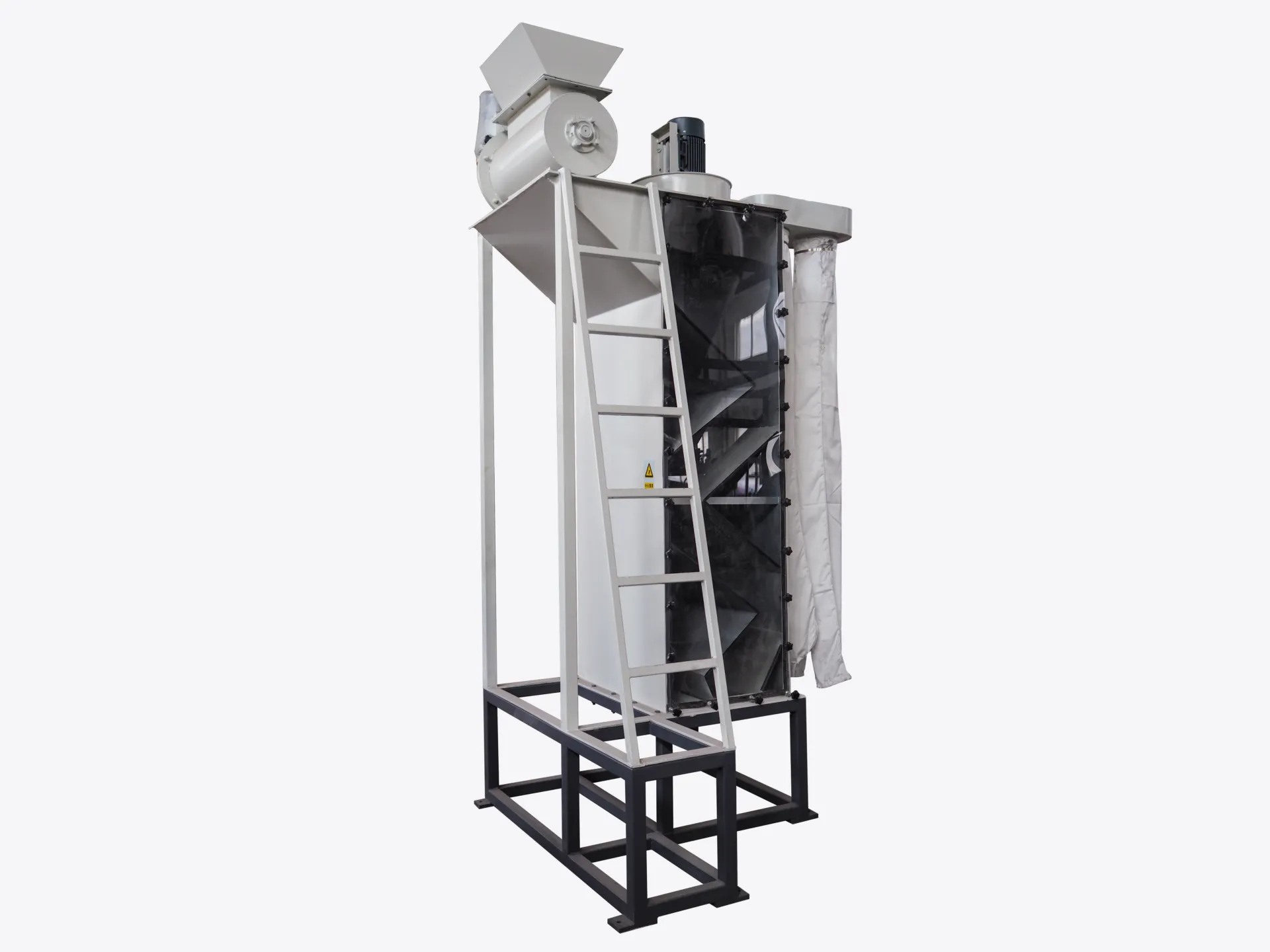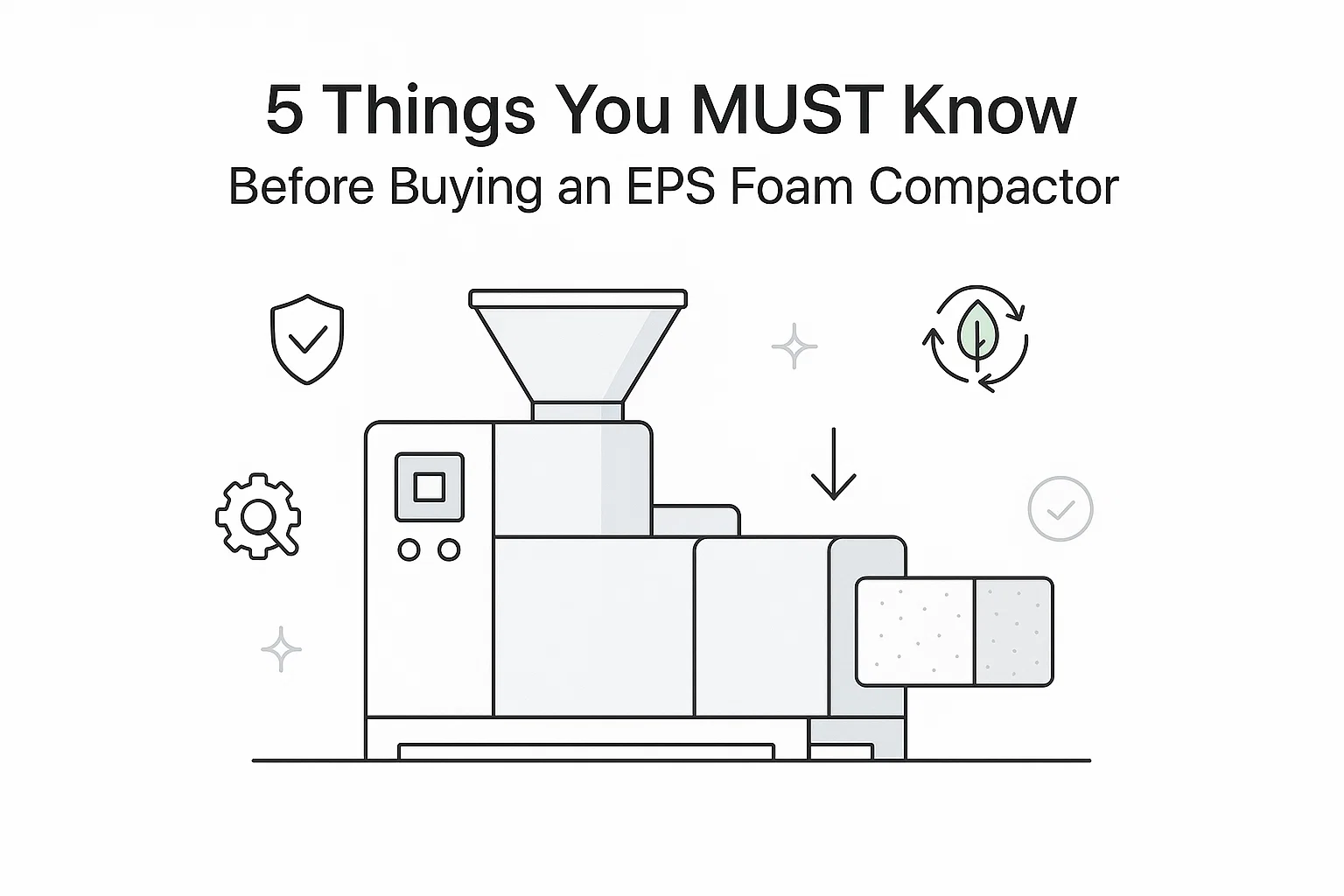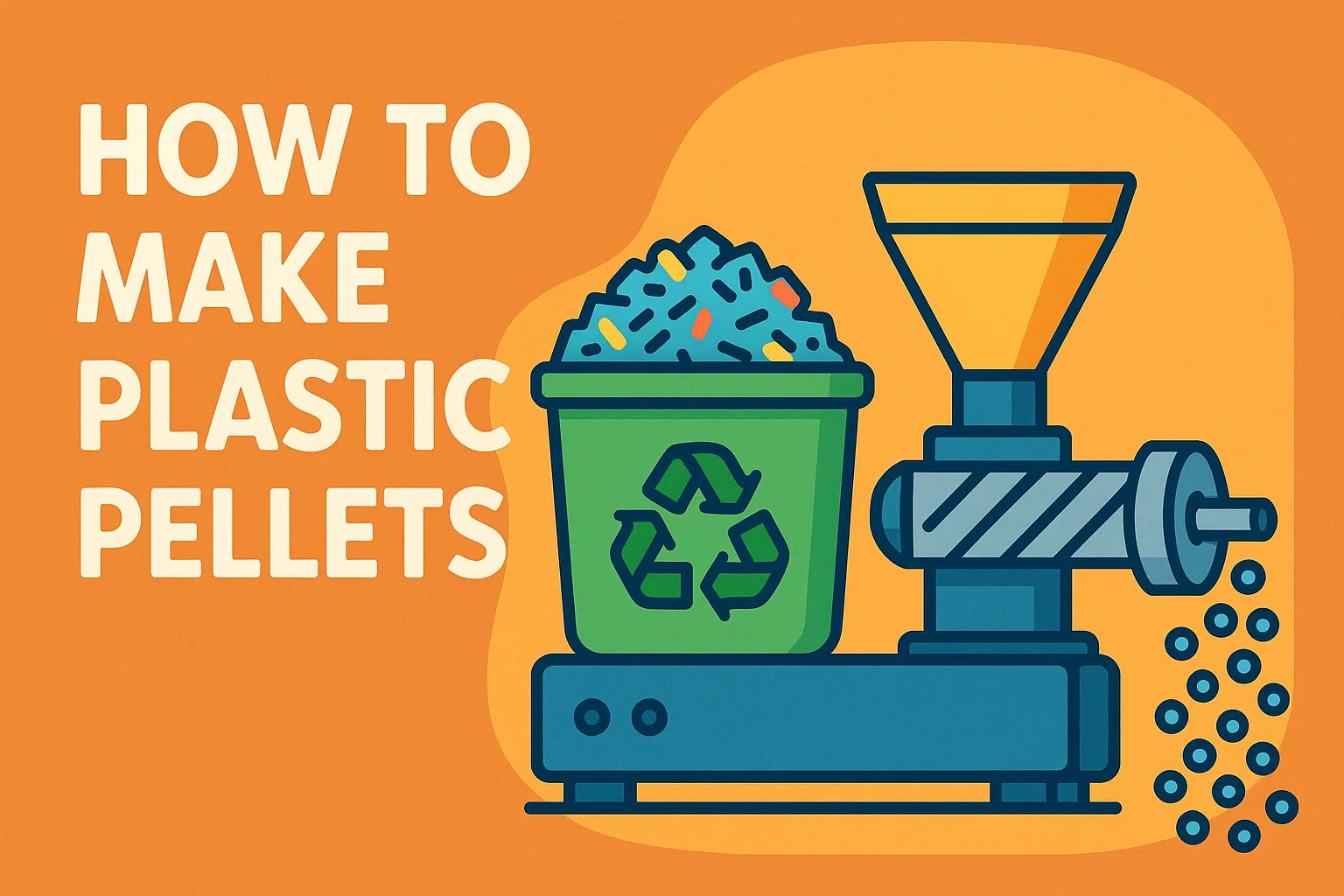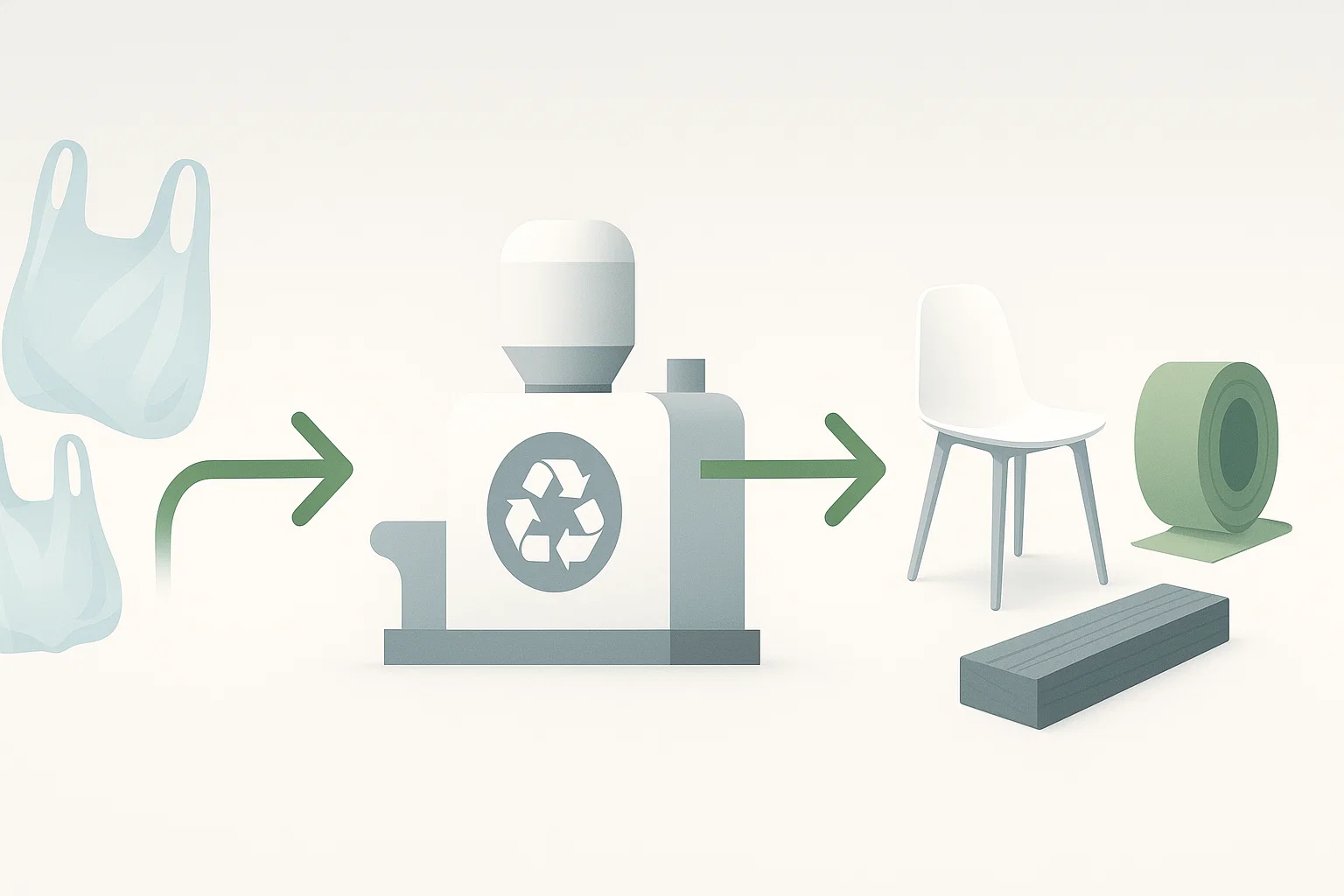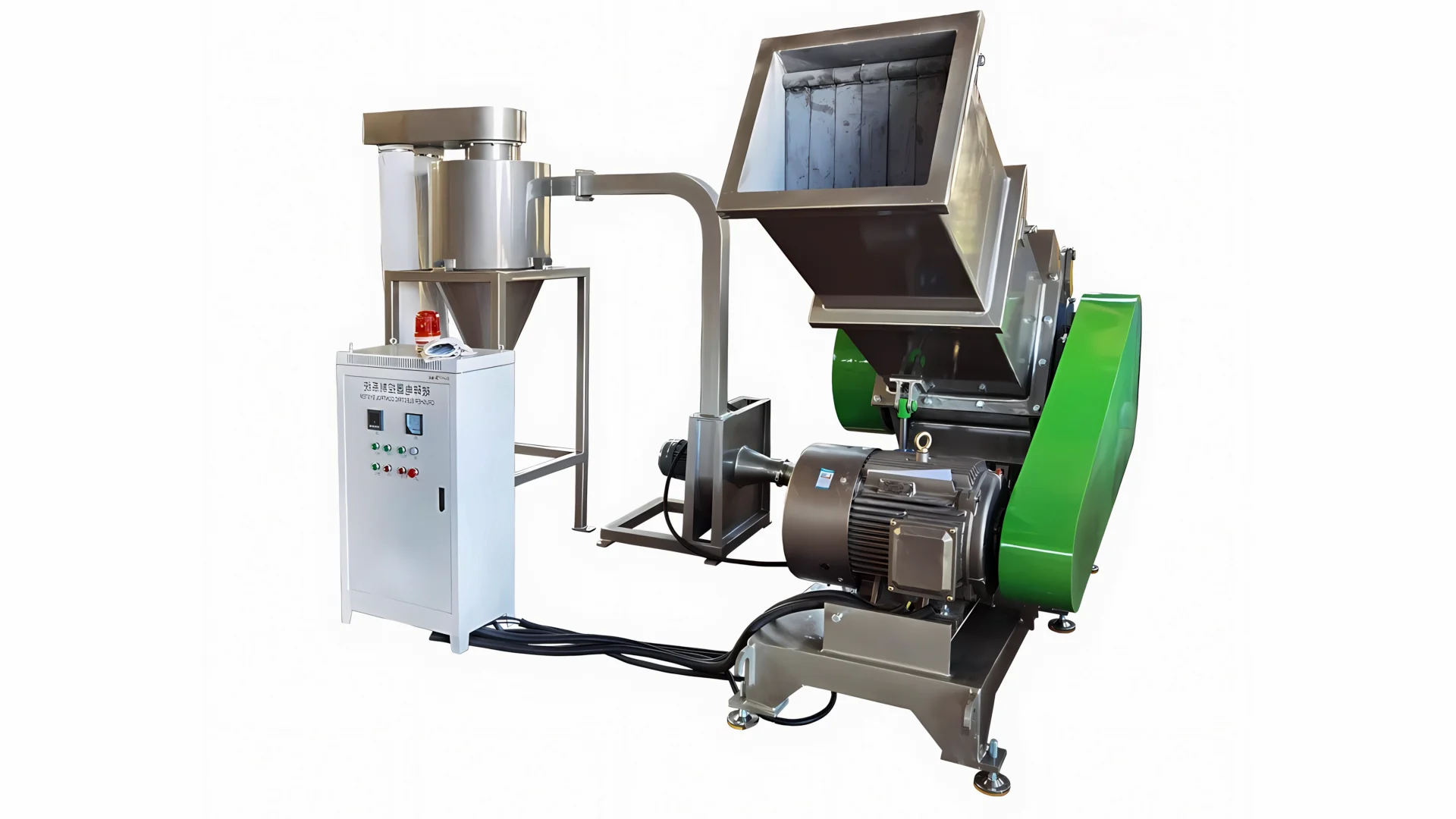Recycling News
For any successful recycling operation, the journey from waste to valuable raw material requires precision at every stage. After transforming post-consumer bottles into clean flakes within a high-performance PET bottle recycling system, a critical decision arises: how to process these flakes into their most marketable form. Pelletizing is the answer, but choosing the right technology is paramount.
The two dominant methods in the industry are traditional strand pelletizing and the more advanced underwater pelletizing (UWP). Each offers distinct advantages and presents different operational and financial considerations. This guide provides a head-to-head comparison to help you determine the optimal solution for your rPET operation.
The Workhorse: Understanding Strand Pelletizing
The strand pelletizing process is a robust and widely adopted method. The workflow is linear and visually intuitive:
- Extrusion: Molten rPET is extruded through a die head, forming continuous, spaghetti-like strands.
- Cooling: These strands travel through a water bath or trough to cool and solidify.
- Dewatering: An air knife or suction unit blows off excess water from the surface of the strands.
- Cutting: The cooled, dry strands are fed into a pelletizer, where a high-speed rotor with cutting blades chops them into cylindrical pellets.
The Precision Method: Understanding Underwater Pelletizing (UWP)
Underwater pelletizing is a more integrated and automated process, valued for its precision and consistency.
- Extrusion & Cutting: Molten rPET is extruded through a die plate that is in direct contact with a circulating water system. Rotating blades slice the polymer into pellets at the moment it emerges from the die face, underwater.
- Cooling & Transport: The newly formed, spherical pellets are immediately solidified by the water and transported as a slurry away from the die head.
- Dewatering: The slurry is fed into a centrifugal dryer, which spins at high speed to separate the water from the pellets, resulting in a dry, finished product.
Head-to-Head Comparison: Strand vs. Underwater
Choosing a pelletizing system for rPET requires a careful analysis of several key factors.
1. Pellet Quality & Consistency
- Strand Pelletizing: Produces uniform, cylindrical pellets. However, the process is susceptible to "strand breakage," which can lead to variations in pellet length ("longs") and the generation of dust or "fines." The quality is highly dependent on operator skill during start-up.
- Underwater Pelletizing: Produces highly uniform, spherical, or lenticular (lens-shaped) pellets with minimal variation in size and shape. The immediate cooling process results in very low dust and fines generation. UWP is generally considered to produce a higher, more consistent grade of pellet, which is often demanded by premium applications.
2. Operational Requirements & Complexity
- Strand Pelletizing: The process is more manual, particularly during start-up, which involves an operator manually "threading" the strands from the die head to the pelletizer. Whilst this requires labour, it also makes the system more forgiving of melt viscosity fluctuations and easier for operators to visually troubleshoot.
- Underwater Pelletizing: This is a highly automated, closed-loop system requiring less operator intervention during a run. However, the process is more complex and sensitive. It demands a very stable extrusion process (melt flow, pressure, and temperature) to function correctly. Start-up and maintenance typically require a higher level of technical skill.
3. Initial Investment & Footprint
- Strand Pelletizing: The initial capital investment for a strand pelletizing line is significantly lower than for a UWP system. The equipment is mechanically simpler. However, the footprint can be quite long due to the cooling trough required.
- Underwater Pelletizing: This technology carries a higher initial investment cost, driven by the precision-engineered cutting head, water tempering system, and centrifugal dryer. The overall footprint, however, is often more compact.
4. Best Applications for rPET
- Strand Pelletizing: An excellent, cost-effective choice for general-purpose rPET pellet production, compounding, and applications where minor variations in pellet shape are acceptable. It is a reliable workhorse for operations where minimising initial capital cost is a priority.
- Underwater Pelletizing: The definitive choice for high-end applications that require perfect pellet uniformity for stable processing. This includes injection moulding of parts with complex geometries, automotive components, and compounding high-value engineering plastics where consistency is non-negotiable.
Summary Table
| Feature | Strand Pelletizing | Underwater Pelletizing (UWP) |
| Pellet Shape | Cylindrical | Spherical / Lenticular |
| Pellet Quality | Good to Excellent, potential for fines | Excellent to Premium, highly uniform |
| Complexity | Lower, more manual start-up | Higher, automated, more sensitive |
| Initial Cost | Lower | Higher |
| Footprint | Longer | More Compact |
| Ideal For | General-purpose, cost-sensitive operations | High-end applications, perfect consistency |
Conclusion: Making the Right Choice
The decision between strand and underwater pelletizing is a strategic one. If your business model focuses on producing reliable, cost-effective rPET for a broad market, the lower initial investment and operational simplicity of a strand pelletizing line make it an attractive choice. If your goal is to target premium markets that demand the highest degree of consistency and quality, the superior output and automation of an underwater pelletizing system justify the higher investment.
Ultimately, the success of either pelletizing method depends on the quality of the input material. A clean, dry, and consistent flake, produced by a robust PET plastic washing line, is fundamental to achieving a high-quality final pellet.
At Energycle, we can help you analyse your specific requirements to determine the best value-added processing solution for your recycled materials. Contact our technical team to discuss your project.
In today’s world, recycling plastic bottles is not just an environmental necessity but also a smart business strategy. For manufacturers and industrial recycling equipment buyers seeking reliable, efficient solutions, Energycle Machine offers cutting-edge recycling machines designed specifically for plastic bottle recycling. This article explores the technology, benefits, and applications of recycling machines for plastic bottles, highlighting how Energycle Machine stands out as a trusted provider in this vital industry.
Understanding Plastic Bottle Recycling Machines
Plastic bottle recycling machines are sophisticated systems that process used plastic bottles into reusable materials. These machines typically perform several key functions: crushing, cleaning, de-labelling, and drying the plastic bottles to produce high-quality PET flakes or pellets. These recycled materials can then be used to manufacture new plastic products, supporting a circular economy and reducing environmental impact.
Energycle Machine’s recycling machines incorporate advanced technology to ensure precision and efficiency at every stage of the process. Their systems are designed to handle varying levels of contamination and different types of plastic bottles, providing customised solutions tailored to the needs of manufacturers and recycling professionals.
Key Features and Benefits
- High Efficiency and Automation: Energycle Machine’s plastic bottle recycling machines operate automatically with minimal manual intervention, enhancing productivity and reducing labour costs.
- Comprehensive Processing: From crushing to dewatering, the machines offer a complete recycling line that guarantees clean, industry-standard PET flakes suitable for direct reuse.
- Environmental Impact: By enabling effective recycling of plastic bottles, Energycle Machine supports waste reduction and resource conservation, aligning with global sustainability goals.
- Customisable Solutions: Recognising that different industries have unique requirements, Energycle Machine offers bespoke configurations to meet specific production volumes and quality standards.
Applications for Manufacturers and Industrial Buyers
Manufacturers looking to integrate recycled plastic into their production lines benefit from Energycle Machine’s reliable equipment that ensures consistent material quality. Industrial recycling equipment buyers can trust these machines to deliver robust performance, helping them meet increasing regulatory demands and consumer expectations for sustainable products.
The versatility of Energycle Machine’s recycling systems makes them suitable for various sectors, including packaging, automotive, textiles, and consumer goods, where recycled PET is increasingly valued.
Why Choose Energycle Machine?
With a strong reputation for technical expertise and innovation, Energycle Machine combines industry experience with state-of-the-art technology. Their commitment to quality and customer service ensures that clients receive not only top-tier machinery but also ongoing support and maintenance.
Integrating Energycle Machine’s recycling machines into your operations means investing in a future-proof solution that enhances your company’s environmental credentials and operational efficiency.
Frequently Asked Questions (FAQ)
Q1: What types of plastic bottles can Energycle Machine’s recycling machines process?
A1: The machines are designed primarily for PET bottles, including mineral water, soft drinks, and other beverage containers, accommodating various sizes and contamination levels.
Q2: How automated are the recycling machines?
A2: Energycle Machine’s systems feature high levels of automation, including crushing, washing, de-labelling, and drying processes, requiring minimal manual oversight.
Q3: Can the recycled PET flakes be used directly in manufacturing?
A3: Yes, the recycled PET flakes produced meet industry standards and can be directly used to manufacture new plastic products.
Q4: Does Energycle Machine provide customised recycling solutions?
A4: Absolutely. They tailor their recycling systems to match specific customer needs, production capacities, and quality requirements.
Take the Next Step with Energycle Machine
For manufacturers and industrial buyers committed to sustainable practices and operational excellence, Energycle Machine offers the perfect blend of innovation, reliability, and expertise in plastic bottle recycling machines. Discover how Energycle Machine can transform your recycling process by visiting their PET bottle recycling system page or contacting their team today to request a personalised quote.
In the current industrial landscape, optimizing your plastic recycling process not only supports environmental sustainability but also significantly enhances operational efficiency and profitability. At Energycle, we specialize in providing cutting-edge plastic recycling solutions, including state-of-the-art plastic recycling machines tailored for diverse industrial needs.
Here are ten practical, expert-approved tips to increase efficiency in your plastic recycling processes.
1. Proper Sorting at Source
Efficiency in plastic recycling begins at the source. Proper sorting drastically reduces contamination and improves the purity and quality of recycled materials. Implement clearly labeled sorting bins and educate your employees to ensure effective sorting from the start.
- Clearly labeled recycling bins
- Training for employees
- Regular audits and feedback
2. Invest in Advanced Plastic Recycling Machines
Upgrading to modern plastic recycling machines like those offered by Energycle can substantially improve your recycling process. These machines feature advanced technology that:
- Enhances sorting precision
- Increases processing speed
- Reduces energy consumption
By integrating these high-tech solutions, companies achieve higher recycling rates and lower operational costs.
3. Regular Maintenance of Equipment
Scheduled maintenance is vital for the longevity and efficiency of your plastic recycling machinery. Regular inspections and proactive maintenance help:
- Minimize downtime
- Prevent costly breakdowns
- Ensure continuous productivity
Energycle’s plastic recycling machines are designed for easy maintenance and durability, ensuring maximum uptime and efficiency.
4. Optimize Workflow and Process Design
An efficient workflow reduces unnecessary movements, minimizes delays, and streamlines your plastic recycling operation. Evaluate and redesign your recycling layout to:
- Minimize physical distances between processing stages
- Enhance material handling
- Optimize storage solutions
5. Train Your Workforce
Skilled and knowledgeable workers significantly impact the efficiency of the recycling process. Invest in ongoing training programs to help your workforce:
- Operate machinery proficiently
- Understand recycling standards and best practices
- Maintain safety and compliance
Energycle provides comprehensive training alongside our plastic recycling solutions, empowering your team to maximize efficiency.
6. Monitor and Measure Performance
Utilize key performance indicators (KPIs) to measure the efficiency of your recycling processes. Regular monitoring and data analysis enable you to:
- Identify bottlenecks and inefficiencies
- Make informed, data-driven decisions
- Continuously improve operational performance
7. Ensure Quality Control
Implementing rigorous quality control measures ensures the consistent quality of recycled plastics. Effective quality control practices include:
- Frequent inspections of raw and recycled materials
- Using advanced detection systems integrated into recycling machinery
- Immediate correction of identified issues
8. Foster Partnerships and Collaborations
Collaboration within the supply chain and industry partnerships can lead to shared best practices, innovation, and resource efficiency. Energycle actively engages with industry stakeholders to promote collaborative recycling solutions, enhancing efficiency and sustainability.
9. Leverage Automation and AI Technologies
Automation and artificial intelligence (AI) are revolutionizing the recycling industry. Modern plastic recycling machines equipped with AI can:
- Improve sorting accuracy
- Predict maintenance needs
- Enhance overall efficiency and productivity
Energycle offers innovative recycling machines embedded with AI and automation features, providing significant operational advantages.
10. Adopt Sustainable Practices
Incorporating sustainability into your recycling operations goes beyond efficiency—it positions your business as environmentally responsible, aligning with regulatory compliance and consumer expectations. Practices to adopt include:
- Reducing energy and water consumption
- Implementing circular economy principles
- Continuously innovating recycling methods
Energycle’s recycling solutions are designed with sustainability in mind, helping you meet your environmental objectives.
Frequently Asked Questions (FAQs)
Q1: How do modern plastic recycling machines from Energycle improve efficiency?
Energycle machines feature advanced sorting capabilities, automation, and reduced energy consumption, directly boosting efficiency and productivity.
Q2: What is the importance of sorting plastics before recycling?
Proper sorting reduces contamination, improves the quality of recycled plastics, and significantly enhances process efficiency.
Q3: How often should recycling machinery undergo maintenance?
Regular maintenance checks are recommended monthly, with comprehensive inspections quarterly or semi-annually, depending on usage intensity.
Q4: What training does Energycle provide with its recycling machines?
Energycle provides comprehensive operational, safety, and maintenance training programs tailored to each machine model.
Ready to Enhance Your Recycling Efficiency?
Boost your plastic recycling efficiency today by partnering with Energycle. Our expert team is ready to guide you towards optimal solutions tailored specifically to your operational needs.
Request a Quote or Contact Energycle today for a personalized consultation.
In the world of plastics recycling and manufacturing, selecting the appropriate equipment to ensure efficiency and purity is crucial. Rumtoo's Zig-Zag Air Classifier, also known as an air separator, is a powerful tool designed specifically to handle various types of plastics. In this guide, we’ll dive deep into the plastic materials that are best suited for processing with Rumtoo’s industry-leading Zig-Zag Air Classifier.
Understanding the Zig-Zag Air Classifier
Rumtoo’s Zig-Zag Air Classifier separates materials based on weight and aerodynamic properties using controlled airflow. Ideal for recycling facilities and manufacturers, this technology significantly improves the quality and purity of plastic materials, enhancing their market value and environmental sustainability.
For more detailed specifications, you can explore Rumtoo’s Zig-Zag Air Classifier.
Ideal Plastic Materials for Processing
Choosing the right materials is critical to maximizing the benefits of your air classifier. Here are the plastics that achieve optimal results:
1. PET (Polyethylene Terephthalate)
PET plastics, widely used in bottles, packaging, and textiles, greatly benefit from air classification due to their relatively uniform density and lightweight nature.
Benefits for PET:
- Improved purity and consistency
- Enhanced recycling efficiency
- Reduction of contaminants and foreign materials
2. HDPE (High-Density Polyethylene)
Commonly used in containers, piping, and automotive components, HDPE’s robust nature makes it highly compatible with air separators.
Benefits for HDPE:
- Increased efficiency in recycling processes
- Significant reduction in contamination
- Higher quality recycled outputs
3. LDPE (Low-Density Polyethylene)
Used primarily in packaging films and plastic bags, LDPE’s lightweight properties make it highly suitable for the Zig-Zag Air Classifier, ensuring excellent separation from contaminants.
Benefits for LDPE:
- Enhanced separation from heavier impurities
- Superior purity of recycled material
- Increased commercial value
4. PP (Polypropylene)
Polypropylene is prevalent in packaging, automotive parts, and textiles. Its moderate density and aerodynamic properties align perfectly with the air classifier technology.
Benefits for PP:
- Improved separation quality
- Higher recyclability and purity
- Increased market value post-processing
5. PS (Polystyrene)
Frequently found in consumer goods packaging, insulation, and electronics, polystyrene benefits significantly from precise air separation, ensuring minimal cross-contamination.
Benefits for PS:
- Efficient removal of contaminants
- High purity levels
- Enhanced market value for recycled PS
Materials Less Suited for Air Classification
Though versatile, air classifiers may face limitations with certain materials, particularly those with similar aerodynamic characteristics or densities, such as:
- Mixed plastic composites
- Heavily contaminated plastics with adhesives or coatings
- Plastics mixed with metal or glass fragments
In such cases, additional preprocessing steps might be necessary before classification.
How Rumtoo Enhances Your Recycling Process
Rumtoo’s Zig-Zag Air Classifier provides significant advantages, including:
- Precision Separation: Tailored airflow ensures optimal sorting accuracy.
- Energy Efficiency: Reduced energy consumption compared to traditional methods.
- Environmental Compliance: Helps businesses meet stringent recycling regulations.
Rumtoo’s expertise in air classification technology positions it as a trusted partner for manufacturers aiming to elevate the quality and efficiency of their recycling processes.
Best Practices for Maximizing Air Classifier Efficiency
To ensure optimal results when using Rumtoo's Zig-Zag Air Classifier, consider these best practices:
- Regularly maintain and inspect your equipment
- Ensure proper preprocessing of plastics (cleaning, shredding)
- Monitor and adjust airflow settings based on specific plastic types
- Train operators thoroughly on equipment handling and adjustments
FAQ Section
Q: What makes Rumtoo’s Zig-Zag Air Classifier unique?
A: Rumtoo’s technology offers superior aerodynamic separation, enhanced energy efficiency, and precision sorting, ideal for diverse plastic recycling needs.
Q: Can mixed plastics be processed effectively?
A: While the classifier excels at sorting specific plastics, mixed plastics may require additional preprocessing to optimize efficiency.
Q: Is the air classifier suitable for industrial-scale operations?
A: Absolutely. Rumtoo’s Zig-Zag Air Classifier is designed specifically for industrial applications, offering high throughput and reliability.
Q: What maintenance does the Zig-Zag Air Classifier require?
A: Regular inspections, cleaning, and routine checks of airflow settings will maintain peak performance.
Ready to Upgrade Your Recycling Operations?
Discover how Rumtoo’s Zig-Zag Air Classifier can transform your plastic recycling process. Contact Rumtoo today or request a quote to elevate your recycling capabilities, reduce contamination, and enhance your business sustainability.




